Scientists in B.C. have made two landmark discoveries, identifying both the bacteria that wiped out billions of sea stars and a new virus that may be killing farmed oysters.
The breakthroughs, both made at a University of British Columbia laboratory and published Monday, represent major leaps forward in understanding how disease is reshaping marine ecosystems.
Native to the Western Pacific Ocean, Pacific oysters are now the most widely grown species in the world — cultivated in Australia, Canada, China, France, South Korea, the U.K. and the U.S.
But in recent years, the bivalve has faced a number of stressors, from climate change-driven ocean warming to human encroachment and disease.
B.C. oyster farmers have grappled with years of devastating mass mortality events. Nico Prins, executive director of the B.C. Shellfish Growers Association, said summer oyster die-offs have become so routine, many small farmers have stopped buying oyster seed in the warmer months or left the industry entirely because they are uncertain the shellfish will survive.
“It is devastating,” he said. “They die right before you can market them.
“When you have two or three bust seasons in a row, you go out of business.”
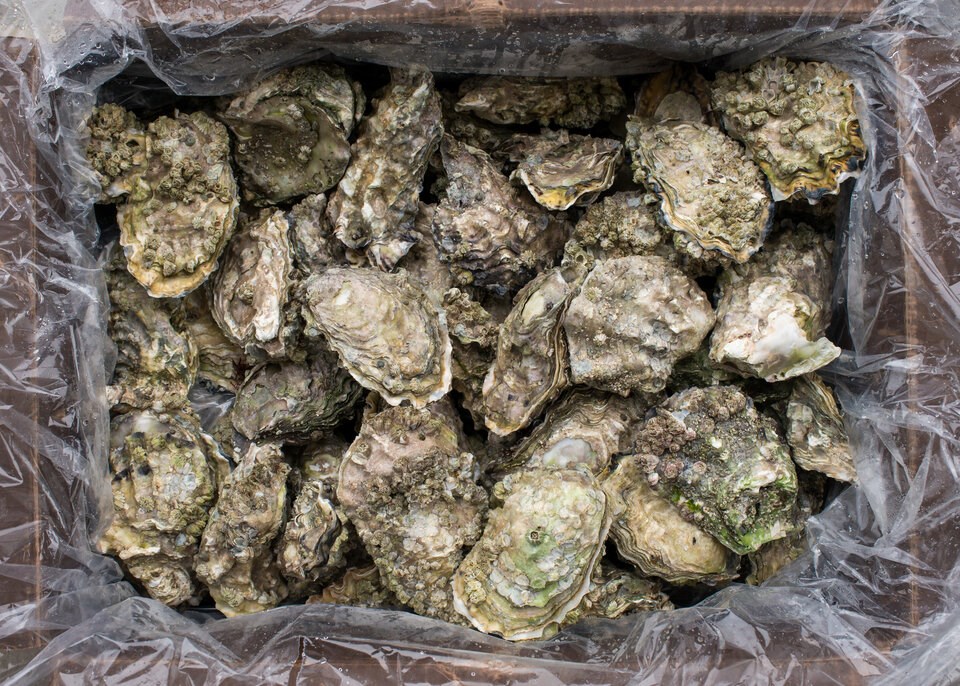
The die-offs have tended to coincide with warm waters, but until now, nobody has pinpointed what is actually killing the oysters. In 2020, Kevin Zhong and his UBC colleagues travelled across the Salish Sea in an attempt to answer that question.
When they visited three farm locations in Baynes Sound on Vancouver Island, up to 90 per cent of the shellfish were dead or dying. Curtis Suttle, a UBC professor of microbiology who oversees the UBC Suttle Lab, remembers seeing gaping shells and dying flesh.
“Literally every basket of oysters being brought up, every one was dead or dying,” he said.
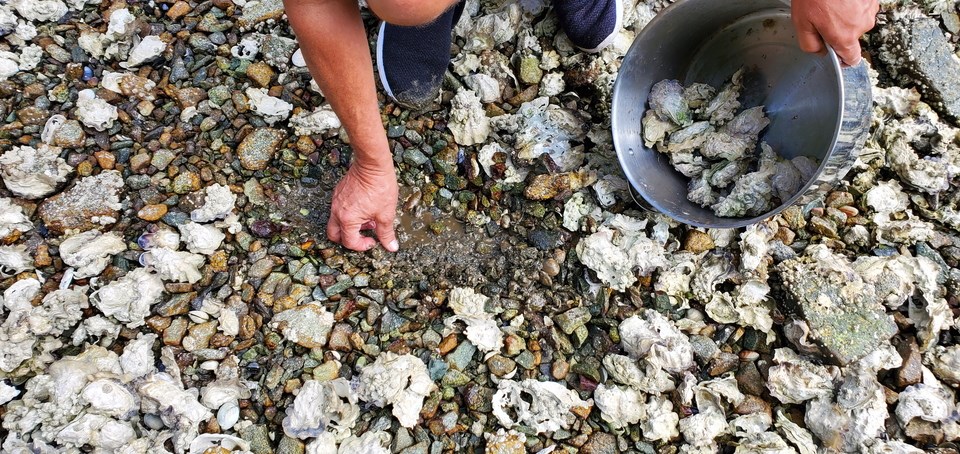
The team took dozens of samples at the farms, then travelled to beaches across the Salish Sea to collect blood and tissue samples from wild oyster populations, stopping at Desolation Sound, Cortez, Texada, Lasqueti, Hornby and Denman islands, and the north end of the Saanich Peninsula, among others.
Samples were flash-frozen in liquid nitrogen and stored at -80 C until they could be processed and undergo genetic testing in a lab at UBC.
When the results came back, the scientists isolated the Pacific Oyster Nidovirus 1, or PONV1 virus, on a distinct evolutionary branch. “We found a new virus that has never been found before,” said Zhong.

Statistical link offers strong association between virus, die-offs
The scientists found the virus in 20 of 33 oysters showing “obvious signs of disease” from all three Vancouver Island farm sites. By contrast, PONV1 was absent in all of the healthy wild oysters that were sampled.
When they searched for the virus in a publicly available genetic database, Suttle and his team found PONV1 in Pacific oysters from China and France, as well as an oyster population in the U.S. state of Maine. The virus’s genetic code had been hiding in plain sight all along.
“They were looking at oysters, not viruses,” said Suttle of past scientific work. “It’s like you’re driving your car and looking at mountains, not daisies. But once you see the daisies, you realize they’re everywhere.”
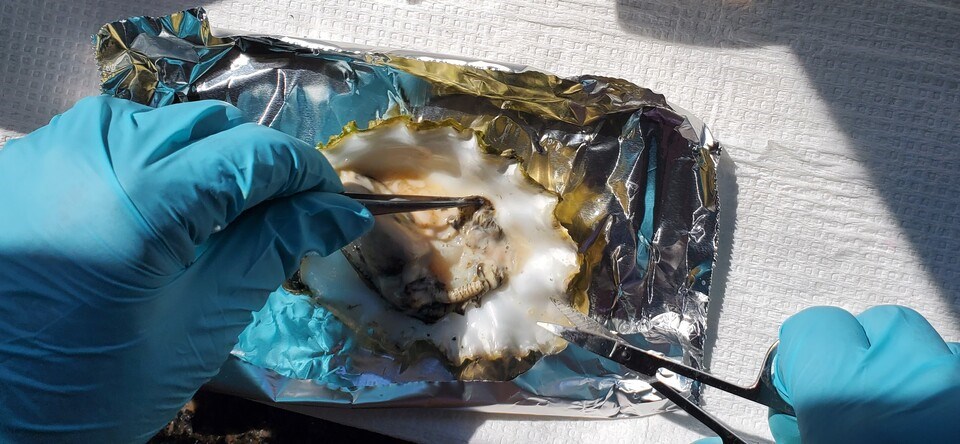
Published in the journal Proceedings of the National Academy of Sciences on Monday, the results suggest a statistical link between the new virus and the oyster die-offs.
Zhong, who led the study as a research associate at UBC’s Earth, Ocean, Atmospheric Science Department, said the team now needs to carry out biological experiments to prove how the virus might be contributing to mass mortality events.
“We found a new virus that has never been found before,” he said. “Right now, there is a link. We cannot be 100 per cent sure.”
Suttle cautioned that the team does not know where PONV1 came from, whether it was here all the time, or whether it was transported from somewhere else. He said the presence of the newly discovered virus should act as a warning for anyone looking to ship oyster seed from one country to another.
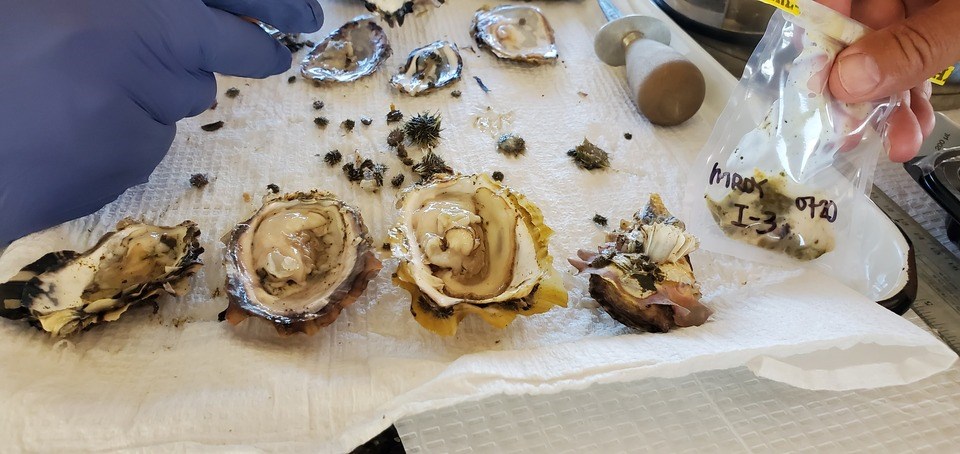
The researchers have yet to figure out what stressors are making the oysters’ immune systems vulnerable to disease. One assumption, said Zhong, is that warming sea temperatures are allowing the pathogen to proliferate in the oysters and promoting outbreaks.
Whatever the case, the virus appears to be very widespread and “strongly associated” with mass die-offs in Baynes Sound.
“Knowing the virus is there, we can open up a whole new box of tools to understand what’s happening,” Suttle said.
Selective breeding ‘biggest weapon’ against climate change, disease
Prins of the BC Shellfish Growers Association said he is still reviewing the details of the study, and it’s too early to directly comment on its findings.
“I don’t think we know enough yet,” he said.
The oyster-farming industry has already taken steps to combat rising water temperatures and disease. Five years ago, it started a local breeding program to genetically select the strongest oyster lineages, said Prins.
Whereas a decade ago, B.C. imported nearly 100 per cent of its oyster seed from places like Chile, Europe or the U.S., today, breeding programs mean 85 per cent of the seed comes from local production, he said.
“I think that’s our biggest weapon in dealing with these climate or warming water.”
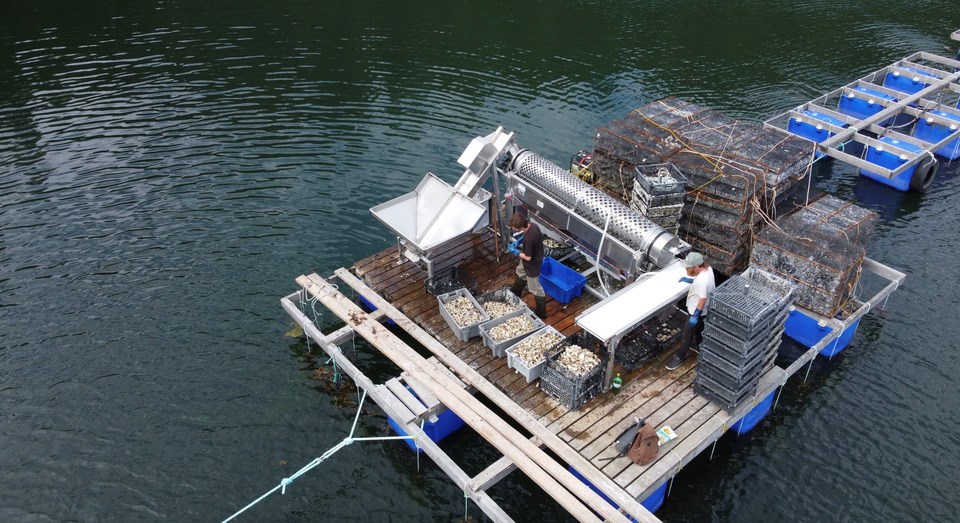
If the virus discovered by the UBC team does end up being a major culprit in the die-offs, Prins said the industry was ready to ramp up farm-to-farm bio-security practices that could pre-screen for the virus.
Nowhere would that be more important than in Baynes Sound. The stretch of coast accounts for about 60 per cent of shellfish production in B.C., with Pacific oysters accounting for roughly 80 per cent of what’s grown there.
Protecting the longevity of B.C.’s oyster industry inevitably provides job and food security. But a number of studies have also found that oyster aquaculture boosts habitat and food availability for other marine species.
One study published in May found that a tonne of harvested Pacific oysters can remove an average of more than three kilograms of nitrogen and 0.35 kilograms of phosphorus and sequester more than 70 kilograms of carbon from the environment. The researchers’ conclusion: Pacific oysters act as a potential remediator of nutrients and a short-term carbon sink.
“It’s an industry that’s under a lot of duress, and on the other hand, it’s one of the most sustainable industries,” said Suttle. “It’s the industry that one would strive to have.”
Sea star’s killer found
While the oyster discovery offers a new lead, the second breakthrough from Suttle’s lab provides a definitive answer to a long-standing ecological mystery: the cause of sea star wasting disease.
Melanie Prentice, a research scientist with the Hakai Institute who led the research, said the wasting disease has killed nearly six billion sea stars from Baja California to Alaska, including the sunflower sea star — a now critically endangered species that can grow to the size of a bicycle tire.
“In a matter of months, they became functionally extinct. Billions and billions of these starfish were gone,” added Suttle.
The disappearance of the apex predator from huge swaths of coastline has allowed urchins, its spiky prey, to decimate kelp forests. In places like California, up to 90 per cent of kelp forests have been replaced by “urchin barrens.”
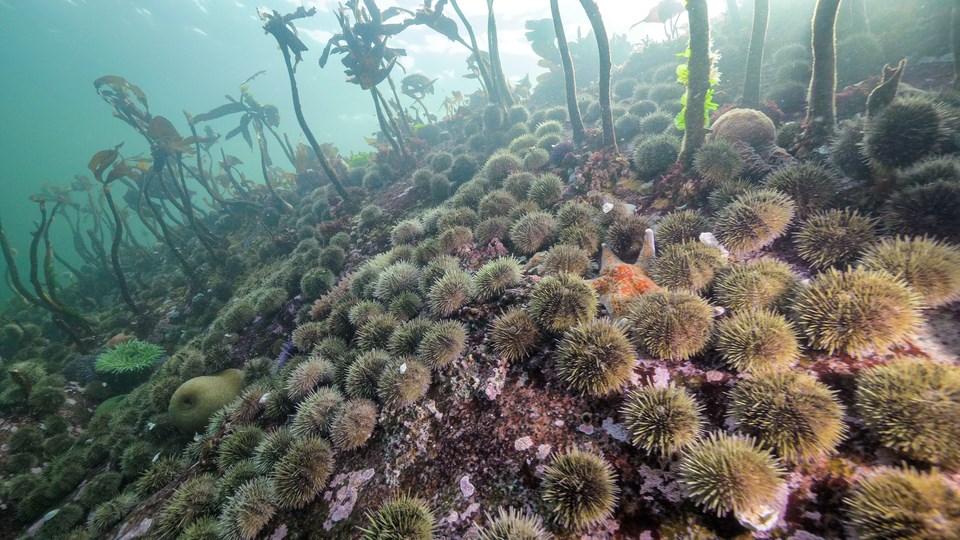
The undersea transformation removes a key nursery for young fish and a home and hunting ground for marine mammals. The removal of kelp forests also eliminates a natural barrier that otherwise would have protected coastal communities from erosion and storms.
“It’s a domino effect. If you remove a really important apex predator from this system, it has this cascading effect on all these other species,” said Prentice.
Scientists have spent the last 12 years trying to understand what was killing the sea stars. For Prentice, her experiments started with collecting sea stars from the wild, then quarantining them in a lab to ensure they weren’t sick.
Dividing them into two groups, the scientists injected one set of sea stars with tissues infected with the wasting disease. Through genetic testing of sick sea stars, the scientists isolated a single elusive killer: Vibrio pectenicida, a pathogen from the same genus as the bacteria that causes human cholera.
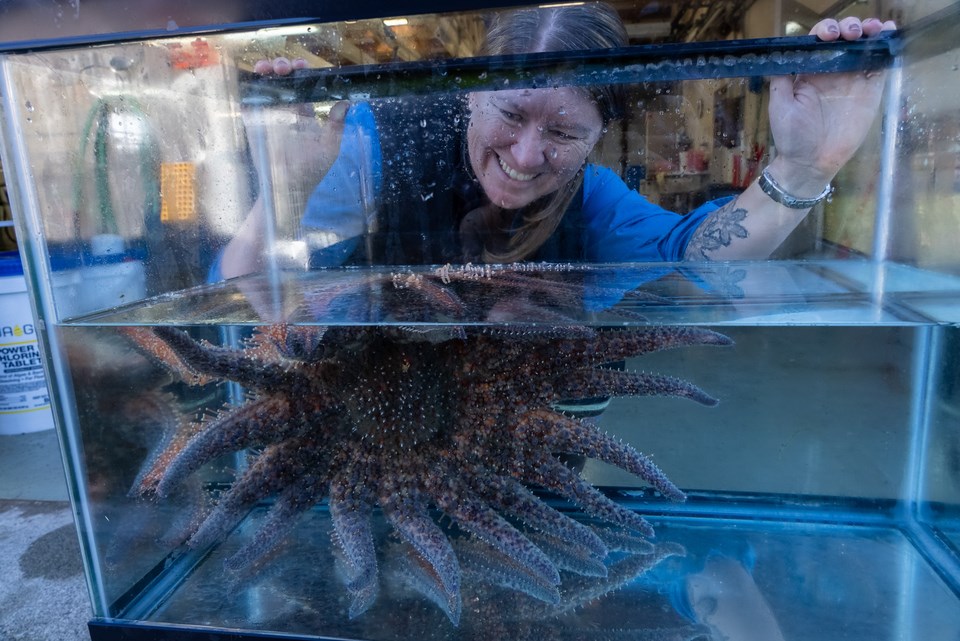
Described by French scientists in the 1990s as the “scallop killer,” the bacteria had been found to kill the bivalve (as well as oysters) by producing a deadly toxin.
The version of the bacteria wiping out sea stars off the west coast of North America was found to be a different strain, known as FHCF-3, and it’s not yet clear if the killing mechanism is the same, according to the study published Monday in the journal Nature Ecology & Evolution.
To make sure the bacteria was the culprit, Prentice and her colleagues injected it alone into healthy sea stars. She remembers being alone in the lab on her birthday weekend when signs of illness first emerged in the creatures.
“It was so clear. I almost didn’t believe it,” Prentice said.
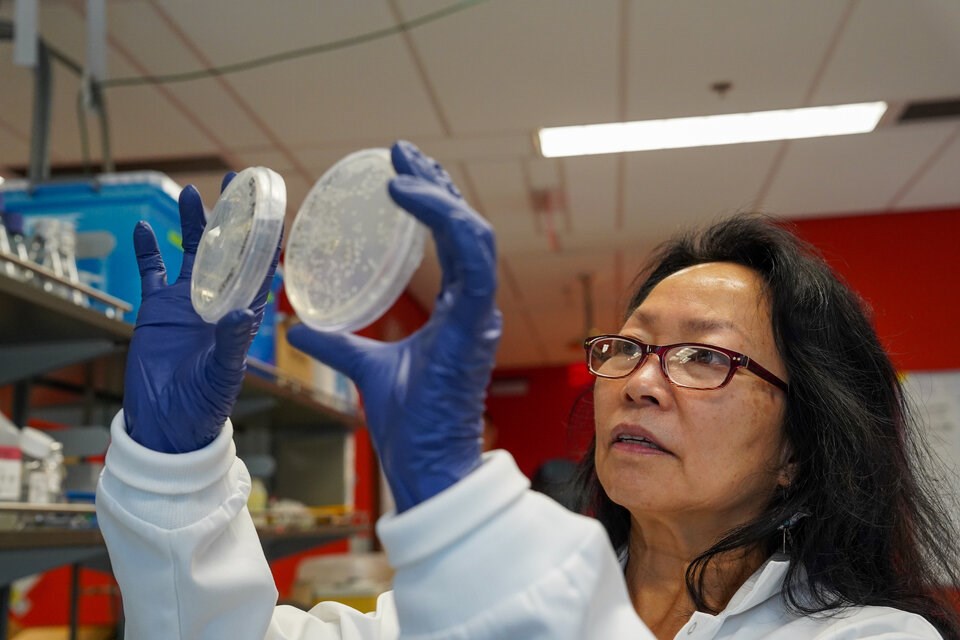
Now that they have found what is killing the sea stars, Prentice said the next step is to come up with interventions to help reintroduce animals being bred up and down the Pacific coast back into the wild.
That includes developing diagnostic tests to ensure the animals aren’t being set free in contaminated waters. Prentice said she is also looking for sea stars that are resistant to the bacteria so they can be selectively bred and form the base of an immune wild population.
“I’m hoping it can serve as a baseline on how we deal with increasing epidemics in the marine environment,” she said.
From oysters to sea stars, both Prentice and Suttle said warming oceans are likely weakening sea creatures’ ability to defend themselves. The inevitable result is more severe disease outbreaks.
“We don’t know what those particular triggers are,” said Suttle. “Those are the questions that really need to be asked.”
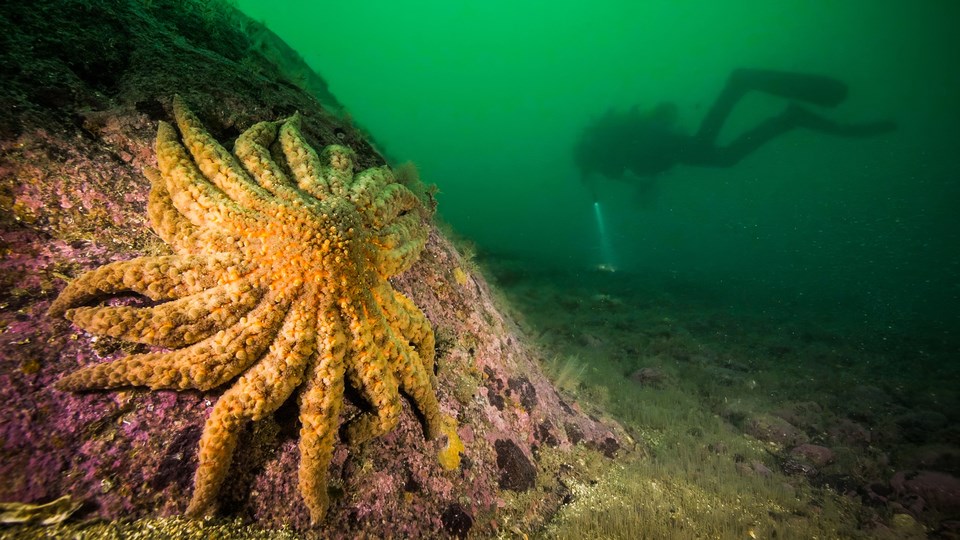
.png;w=120;h=80;mode=crop)


